Inside Ace, Poland’s largest superyacht
To view the article visit: https://www.boatinternational.com/yachts/editorial-features/inside-ace-conrad-superyacht-report
An international team collaborated on the build of Conrad Shipyard’s Ace but, as the largest superyacht to emerge from the country, she’s really Poland’s triumph. Cecile Gauert discovers how it came up trumps
It’s December and the Old Town of Gdańsk in Poland is filled with weekend visitors as the snow falls thick and steady. Amid the festive ambiance, children slide on the frozen bank as their parents stop and stare at a gleaming white yacht, aglow with lights. This boat is the star of the waterfront and the proud shipyard is celebrating her launch.
“I have always had a passion for boats and the ocean,” says the owner of the new Ace, who came to Gdańsk for this launch. He started with smaller boats but realised he would like to own a bigger yacht one day, then he took the time to deliberate. The new 44-metre Conrad C144S is the product of a long quest for this owner and the shipyard too. She is the respected builder’s new flagship and the largest yacht yet built in Poland.
Gdańsk has a healthy marine industry. Just a few minutes up the river that flows through the city, industrial cranes reach for the low-lying clouds. For the past two decades, yacht builders have joined the commercial yards, producing boats that take the made-in-Poland label to the far reaches of the world. And they are getting bigger and better all the time. “Gdańsk has always been known for shipbuilding, but it’s time to say it out loud: the quality of yacht-building is world class,” says Polish-born Radek Gendek, a charter executive for the Luxury Charter Group, who brought the Conrad Shipyard to the owner’s attention.
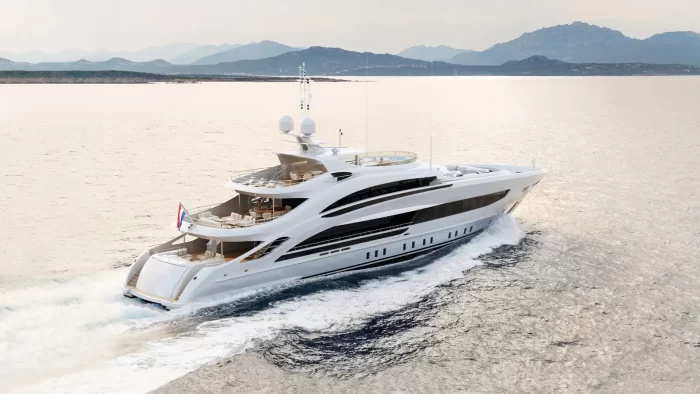
Conrad Shipyard was born in 2003 as a sister company to shipbuilder Marine Projects (established in 1989 by former employees of the Gdańsk Shipyard) and delivered its first yacht, Escape S (now Chillin), for an American client in 2005. While it worked from the start with exterior designers, the yard did most of the interior design work on these projects. CEO Mikolaj Król, an architect and a perfectionist, personally worked with a few owners on these projects supervising an experienced team. The award-winning Viatoris, the superyacht that preceded Ace from the yard, for instance, had naval architecture by Diana Yacht Design and an exterior design by Reymond Langton Design, but its interior was done in-house. It was different with Ace. The owner surrounded himself with a solid team that included an interior designer and an owner’s representative. Letting go of some of the design decisions wasn’t always easy. Król, who has an endearing gift for candour, will tell you that himself.
“Often people fall for the nice furniture and decor, but what is also important is all that you can’t see”
The owner already had a good impression of the artisanship that you can find in Poland, and he liked the people at Conrad who came across as serious and motivated. He also appreciated their transparency. “It may be a bit risky to work with a little-known yard, but I felt that they were people who could be trusted. I did not have that impression everywhere,” he says. “I told them we are going to build a yacht with European style, with floor-to-ceiling windows. I felt from the get-go that they had the heart to do it.”
The 40-metre Viatoris was the starting point for the project that would become Ace. The owner has known Gendek of the Luxury Charter Group for about 15 years. Gendek lives in Gdańsk and that’s where he first saw Viatoris fresh out of the yard in 2018. Later that year, Conrad was going to show the yacht at the autumn European shows.
“Radek called me (and said) ‘I saw an unbelievable boat, it will be in Monaco. Are you coming?’” the owner recalls. He was, and that’s when his quest took a more definite turn. “As soon as I stepped on the passerelle, I could feel the quality,” the owner says. The interior, on the classic side, wasn’t his cup of tea, but he was impressed by the fit and finish.
Up to that point, he had been absorbing information, spending holidays on different types of boat, both catamarans and monohulls, in different destinations. “I have spent many years learning and observing. I wanted to understand this world of yachting. I chartered around the world, in Indonesia, Greece, the Exumas and the Mediterranean,” the owner says. “When Radek took me around boat shows, I asked a thousand questions. And the next day, I would return to the boats and I’d ask the same questions again; he must have thought I was crazy,” he says with a laugh.
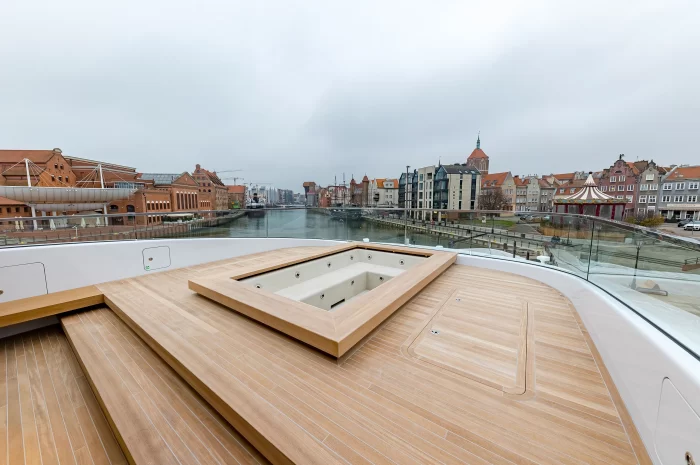

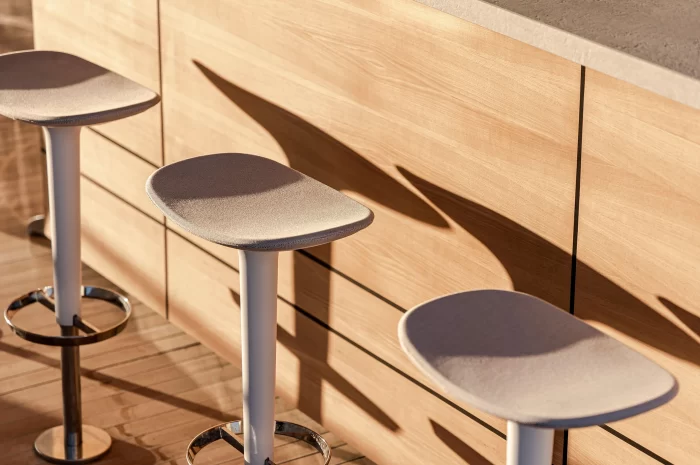
“I spoke to captains, visited shipyards, spoke with builders, did my due diligence to try to understand the differences in quality,” the owner continues. “There is what you see and what you don’t. Often people fall for the nice furniture and decor, but what is also important is all that you can’t see, the noise, etc. I took my time.”
A friend introduced him to Nicolai Yacht Consulting, and he called co-founder Nicola Nicolai over to have a look at Viatoris. It got a thumbs up, and from there the search intensified. The owner, Gendek and Nicolai visited more yachts to get a better handle on his wants, likes and dislikes. It took about another year and a half before they signed the final contract.
“We redesigned every single area, every single space and every single room to adapt it to the owner’s requirements”
Diana Yacht Design and Reymond Langton Design reprised the roles they had played for Viatoris, as naval architect and exterior designer, respectively. And as they worked to develop the concept, the team grew to include Italian design studio m2atelier, one of several Nicolai had suggested. Founders Marco Bonelli and Marijana Radovic, both architects with different backgrounds – she was born in Serbia, while he’s from Genoa, Italy – make an interesting duo. Although they have worked in yachting, including on a 58-metre Codecasa, they have not been able to show much of their work in this arena. As a result, they are better known for their residential work and luxury boutiques. Their modern architectural style appealed to the owner, but he wanted to know more. “I invited them for a weekend in the mountains. I had a good feeling with them,” he says. “They are very organised and detailed.”
While Viatoris was a starting point, it’s obvious the C133 (as the builder refers to its previous superyacht) and the C144S (Ace), are very different yachts. The owner, who enjoys golf, wanted more storage space, comfortable cabins for his guests, a more modern look and better spaces for the crew, especially since he would be offering Ace for select charters.
Of Viatoris, Król says, “It was a beautiful project, but it had very limited crew space. The owner uses it privately, so it was not needed,” he says. “[For the new yacht] we tried to do different profiles, and we tried it with a plumb bow and suddenly it became a completely new boat. A lot of models on the market have a lot of complicated details; this boat cannot be compared to that. But I like these lines a lot because the boat looks like a sculpture. It’s a timeless boat.”
Andrew Langton and Pascale Reymond, co-founders of Reymond Langton Design, see several positives in a vertical bow. “We positively encourage clients to adopt the vertical bow not only for aesthetic reasons [but because] it was proven to improve seakeeping abilities in both the 68- and 98-metre Aviva yachts we previously designed,” Langton says. On the new Conrad, “the near-vertical bow created a huge amount of volume for the crew accommodation. This bow shape was discussed with Mikolaj Król early in the conception of the C144S to increase the crew numbers and make the yacht look strong and dynamic.”
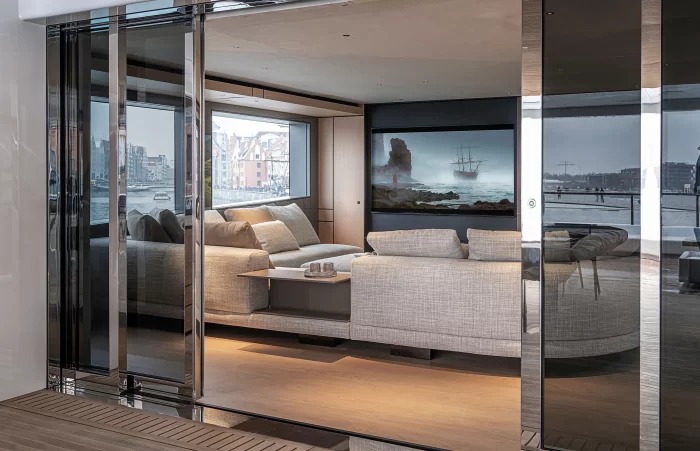


It meshed well with the owner’s vision. Ace is, to an extent, a compilation of some of the favourite features in the detailed notebook he kept. “We redesigned every single area, every single space, every single room to adapt it to (the owner’s) requirements,” Nicolai says. The straight bow design allowed “a proper laundry, a cold room and an enclosed galley” to be added. In other areas, the engineer on Ace enjoys a soundproof control room (not that common on a yacht of this size).
The saloon doors are 2.5 metres high and the gangways 80 centimetres wide (which is the standard found on a 60-metre superyacht). These details, in combination with the floating furniture and big, open vistas, make it easy to forget that the yacht is just under 45 metres.
The owner wanted a “politely elegant” interior – “we whispered the details”
For the owners, who spend quite a bit of time outside, the designers created enjoyable spaces, chief among them a nearly 25-metre-long sundeck with a recessed pool that doesn’t block the view, a large bar and an extra-large television that stores in the overhead. An interesting detail in the pool is that the designers chose a micromosaic from Nero Sicilia that is made with glass recycled from old television and computer screens.
The owner wanted large windows and they are spectacular, whether looking out or in. “The purely white colour scheme contrasted with the black glass window shapes, and sweeping lines from bow to stern, together with our signature undercut ‘rolling wave’ forms on the superstructure, create an elegant yet dynamic aesthetic,” Langton says. “We minimised the height of the bulwarks outboard of both saloons to improve the views out and enhance the owner’s connection to the sea.”
Diana Yacht Design worked on the naval architecture of the new hull, which, modestly powered with twin Caterpillar C18 ACERT engines, cruises at 14 knots. “We had to make sure that with the new and different weight distribution and total weight, we could meet the performance of the yacht,” Nicolai explains.
Sister company Marine Projects built the steel hull, and Conrad did almost everything else in-house. Some minor stainless-steel work had to be subcontracted but the shipyard kept a firm handle on the project. The carpentry, fairing and painting were done at the shipyard. Even the interior panels that decorate the guest cabins were scored and painted on site, under the guidance of m2atelier, to emulate the look and feel of leather found in other areas. Dutch noise and vibration specialist Van Cappellen worked with the shipyard on efficient insulation.
After dark, the interior of the yacht takes on a rich, sophisticated quality. The rhythmic and repetitive nature of the design by m2atelier is soothing and, while beautiful, it is visually unobtrusive. What is left to appreciate is the volume, the high ceilings and the landscape seen through these huge windows, on this occasion fat snowflakes drifting against Gdańsk’s festively lit big wheel. It’s hard to imagine how different the feeling will be when Ace cruises through the blues of Sardinia or the Exumas, reflected in the mirrored ceilings, but no doubt it will be spectacular.

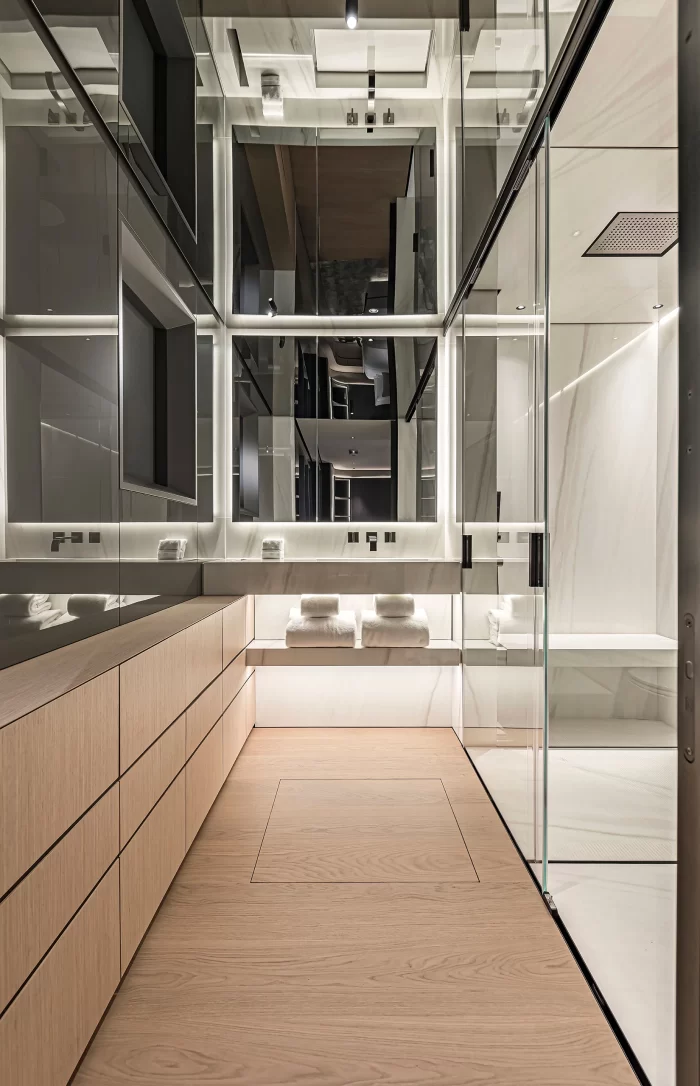
Metallic details are what Bonelli calls a fil rouge – a central theme. Mirrors, back-painted glass tile, nubuck and oak with an interesting knot are the primary materials. The owner wanted the opposite of flashy. For an interior that is “politely elegant”, Bonelli says. “We whispered the details.”
He describes the work as a long process that involved finding out what materials would work best for lasting beauty. Surprisingly perhaps, nubuck is a resilient material that can be easily buffed, he says. “We tested it.” The thought process went into details such as applying a thin wood laminate to the metallic blades in the air conditioning vents to prevent rust from condensation. He points to the treatment in the front cabin where a triangle meets a curve at the intersection of the port-side window and the bed, done to maximise the space.
These qualities will also make Ace a very good option for charters. “She provides much more volume than yachts of a similar size and certainly rivals some of the larger vessels,” Gendek says. “The multiple entertainment options across her three decks will satisfy the most experienced guests looking for a luxury getaway. To name a few: a spectacular sundeck with spa pool and 100-inch outdoor cinema screen; a generous swim platform for easy access to the ocean; and a garage fully stocked with all the latest water toys. Ace also comes with a sleek 10.3-metre Nor-Tech Sport chase tender.”
As in a theatre, where you ignore what is behind, above and below the stage, it’s easy to forget Ace is a complex mix of machinery and technology, especially since the shipyard has taken great care in hiding all the technical elements, following the design’s imperatives. In the owner’s suite on the main deck, for instance, the speakers are invisible, concealed by linen stretched over them. “We did a lot of research and found speakers that work with plywood and fabric to produce good- quality sound. You will not see anything here, but it sounds perfect,” says Conrad project manager Pawel Polak.
One of the keys to success in a project that was started during Covid-19 – and involved so many people around the world – was the detailed 3D models the yard produced. Owing to its commercial background, Conrad has a firm handle on the engineering side of things and it is plain to see, from the elegant bridge to the spacious engine room and garage.
Hull No 2 is already sold and in an advanced stage of construction. The owner of that one had been looking for a long time and fell in love with the concept he saw advertised in a magazine. It will be very similar in both look and feel. It took time, a lot of back and forth, many meetings in person and behind computer screens, but, as the owner of Ace says, “everyone pulled in the same direction”. And thanks to a team motivated to deliver the best, with this new C144S, Conrad Shipyard has truly played an Ace.
First published in the May 2023 issue of BOAT International. Get this magazine sent straight to your door, or subscribe and never miss an issue.
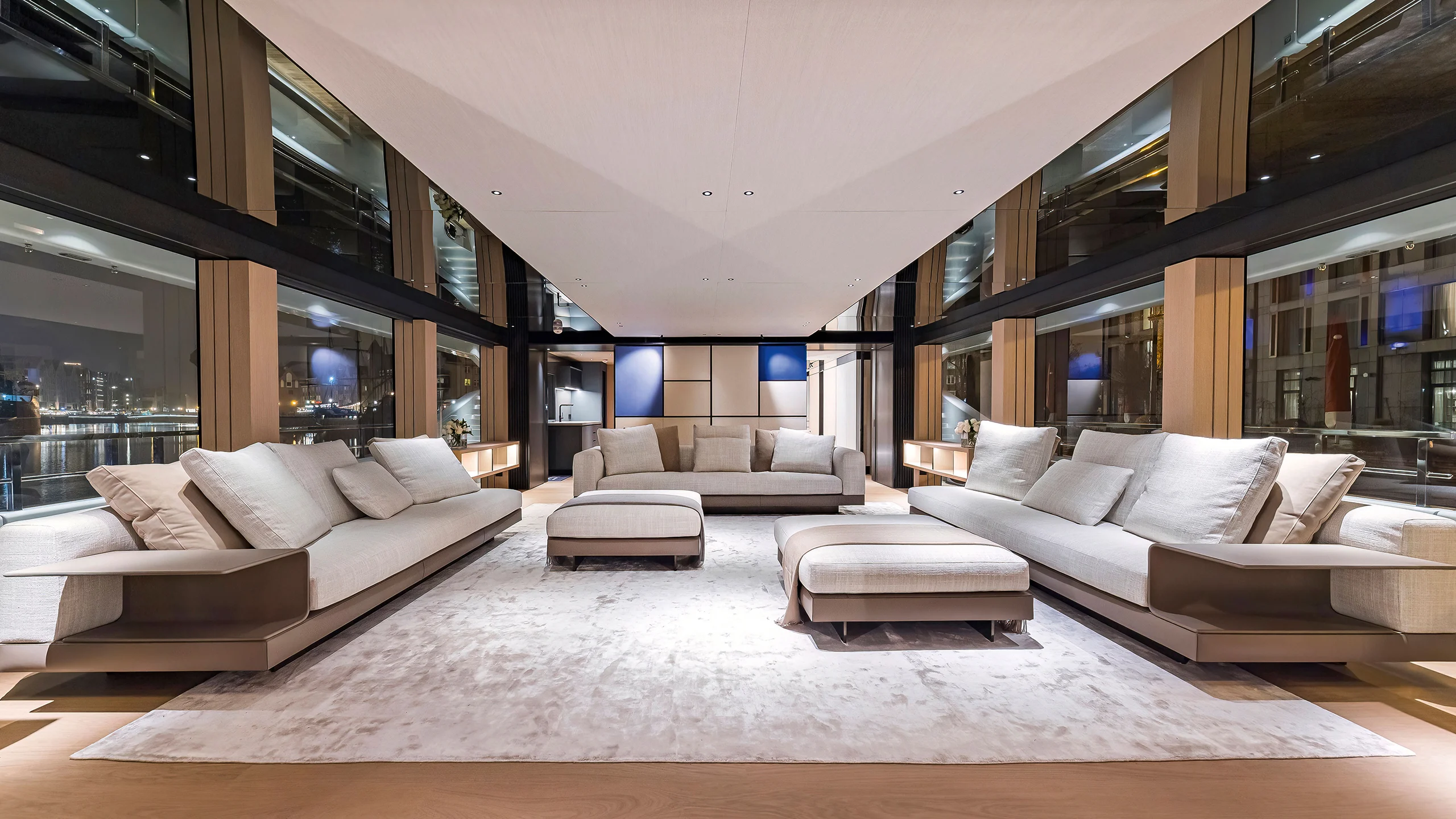




Comments are closed here.